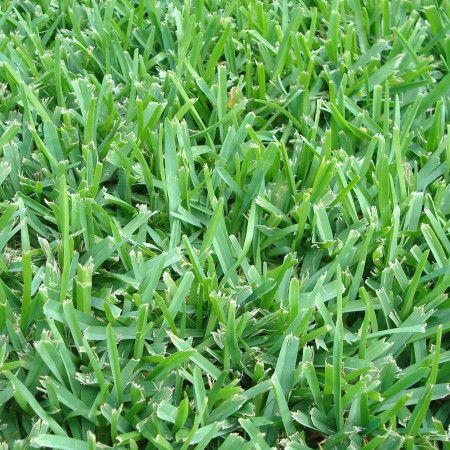RUSTIC lawn



Is a variety of stenotaphrum secundatum to leaf wide that adapts to gardens, sunny or highly shady, survives even under the pines.
Rustic lawn that requires low maintenance and is able to tolerate the drought of our climates, thanks to the deep root system.
Thanks to the stolons, robust and able to cover the areas thinned out by the passage of the pets.
Recommended use
The meadows residential in areas with a temperate climate. Ideal in all situations where there is a very low maintenance level, or with strong shadowing.
Resistance to temperatures
Excellent resistance to heat, vegeta up to 40°C. In winter, when it is exposed permanently to minimum temperatures on average fall below 10°C, the beginning of the entry into dormancy, characterized initially by a growth interruption and subsequent discoloration. To the attainment of the threshold of 0°C has a total bleaching effect with a yellow straw, clear and uniform. The resistance to the cold, in the context of the warm season turfgrasses, it is not the best (up to -5°C) and does not tolerate frosts prolonged. In temperate climates usually enters dormancy in the month of December and then rinverdirsi in the month of April.
Resistance to impact
Media, but is able to colonize areas thinned out, even if with a certain slowness, due to the presence of stolons.
Shadow resistance
Excellent, definitely the best.
Cutting
Requires falciature every 10/12 days during the warmer months; effettuareil cutting blades for presses.
- Stenotaphrum secundatum (%)
- 100
It is necessary to lay the lawn within 24 hours of delivery to guarantee its integrity.
1. Tillage with removal of any residue of old lawn or weeds and large stones (small ones can also be left).
2. Preparation of the installation base by correcting the soil if it is excessively silty or sandy with the addition of silica or river sand or, alternatively, lapillus.
3. Accurate leveling to avoid harmful water stagnation. Keep the ground level 1-2 cm below the level of sidewalks or walkways in general.
4. Fertilization base with phosphorus-based fertilizer to stimulate the root development of the root ball.
5. Laying the lawn: carefully place the clods together, making the edges match (do not overlap). In very large plots, irrigate as you lay it to avoid dehydration of the lawn, especially in the summer season. Do not use small pieces of sod as they are quickly subject to dehydration.
6. Water abundantly as soon as the lawn is laid. Roll the ground to ensure that the carpet can adhere perfectly to the ground, thus eliminating air pockets that would prevent the turf from rooting. In the following days, make sure that the water supply always keeps both the root ball and the underlying soil very moist to help it root. It is advisable to water during the coolest hours of the day: early morning. After approximately 15-20 days after installation, depending on the period, you should no longer be able to lift the clods.
7. Gradually reduce irrigation, trying to accustom the turf to the lowest possible water intake depending on the soil, sun exposure and season.
8. First mowing of the lawn approximately 10 days after installation e always collection of the cut.
9. There are no seasonal limits for the installation of the lawn, but it is good practice, in case of installation at high temperatures, to prevent fungal attacks with specific products and never install in the presence of frozen ground.
10. Fertilizations: at least four basic annual fertilizations are recommended: early spring and late spring with ternary fertilizers with a prevalence of nitrogen content and early autumn and late autumn with ternary fertilizers with a prevalence of potassium content.
11. Fungicide treatment: it is recommended to carry out preventive fungicide treatments, especially in the summer season.







